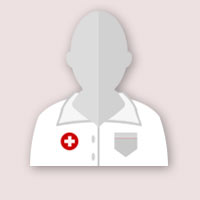Varicose Veins
Varicose veins are swollen, dark blue or purple blood vessels you can see and feel beneath the skin. They often look like twisted cords, and usually appear on the calves, inside of the legs and ankles. Varicose veins form when the valves within a vein weaken and allow blood to flow backward. The vein weakens under the additional strain and balloons outward, raising the skin's surface.
Varicose veins occur more commonly in men than in women, and the risk tends to increase with age. Patients with varicose veins do not usually experience any pain from this condition, although some may develop aching, throbbing, cramping and other symptoms that may indicate a need for medical attention. While not usually of medical concern, many patients with varicose veins are bothered by their appearance and seek treatment for cosmetic reasons.
Varicose veins are typically diagnosed through a physical examination of the affected area. Treatment options typically begin with conservative methods, such as losing weight, keeping the legs elevated whenever possible, and wearing compression stockings. Varicose veins that remain unresponsive to the aforementioned methods may require more advance forms of treatment.
Sclerotherapy treats varicose veins by injecting a solution into the veins, causing them to collapse and gradually disappear. Results are often achieved within four treatment sessions. Endovenuos laser therapy or EVLT is a minimally invasive procedure that treats varicose veins by applying a laser probe to the affected area. Your doctor will determine the most appropriate treatment plan for your individual condition.
There is no definite way to prevent varicose veins from developing; however, there are certain measures that can be taken to reduce your risk of developing this condition. This may include:
- Exercising regularly
- Maintaining a healthy weight
- Eating a diet high in fiber and low in salt
- Elevating the legs
- Sitting or standing up at regular intervals
Your doctor will provide you with more information as to how you can reduce your risk of varicose veins and maintain strong vascular health.
Additional Resources
- MedlinePlus
- National Institute of Health
- Centers for Disease Control and Prevention
- Eunice Kennedy Shriver National Institute of Child Health and Human Development
- U.S. Department of Health & Human Services
- U.S. National Library of Medicine
- WebMD
Copyright © 2013 - 2025 Da Vinci Interactive Webservices, Inc.
All Rights Reserved.
Content presented on this website is for general information only. The healthcare provider | John Schruefer MD | is not responsible for any content selection, or any errors, inconsistencies, or outdated information.
